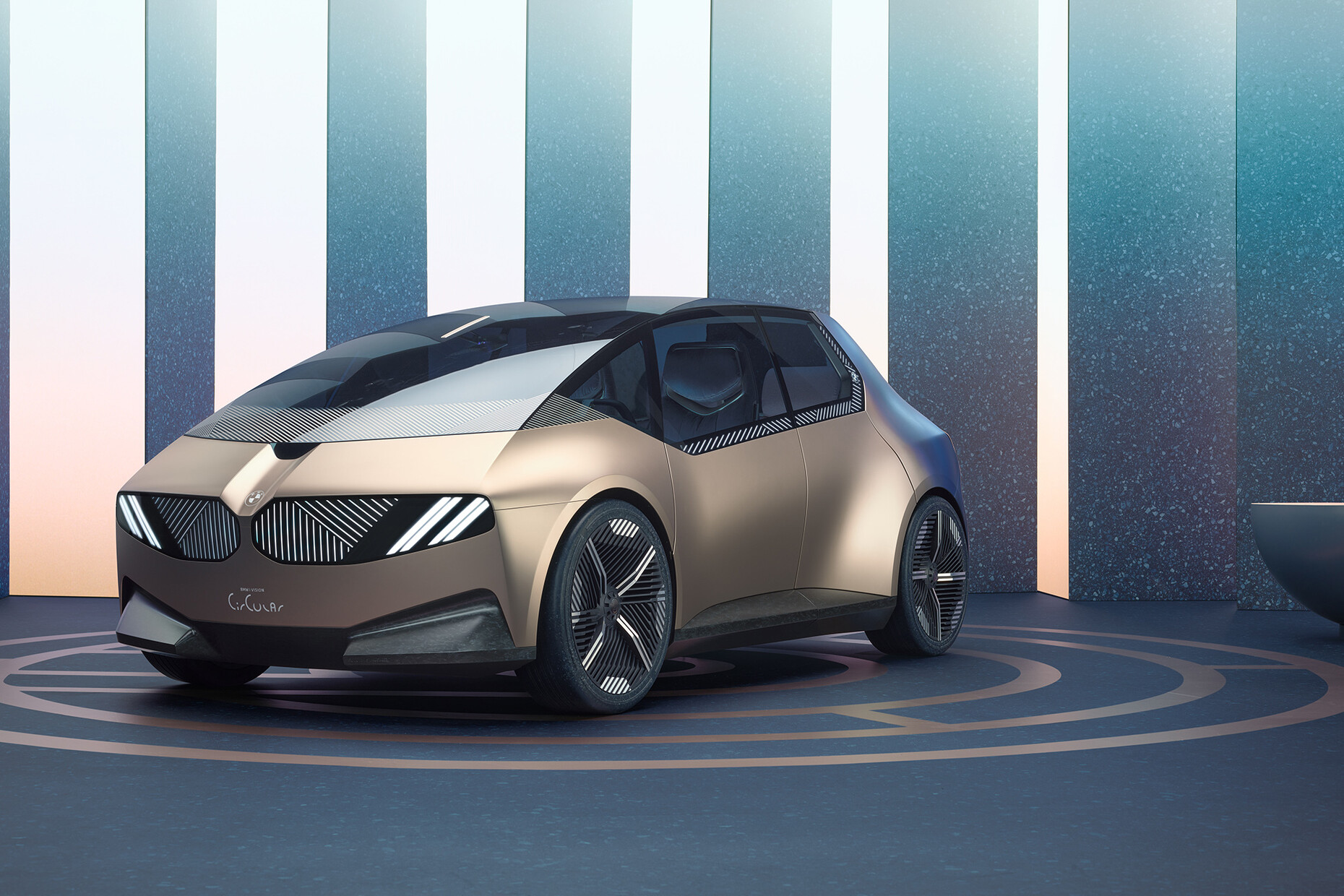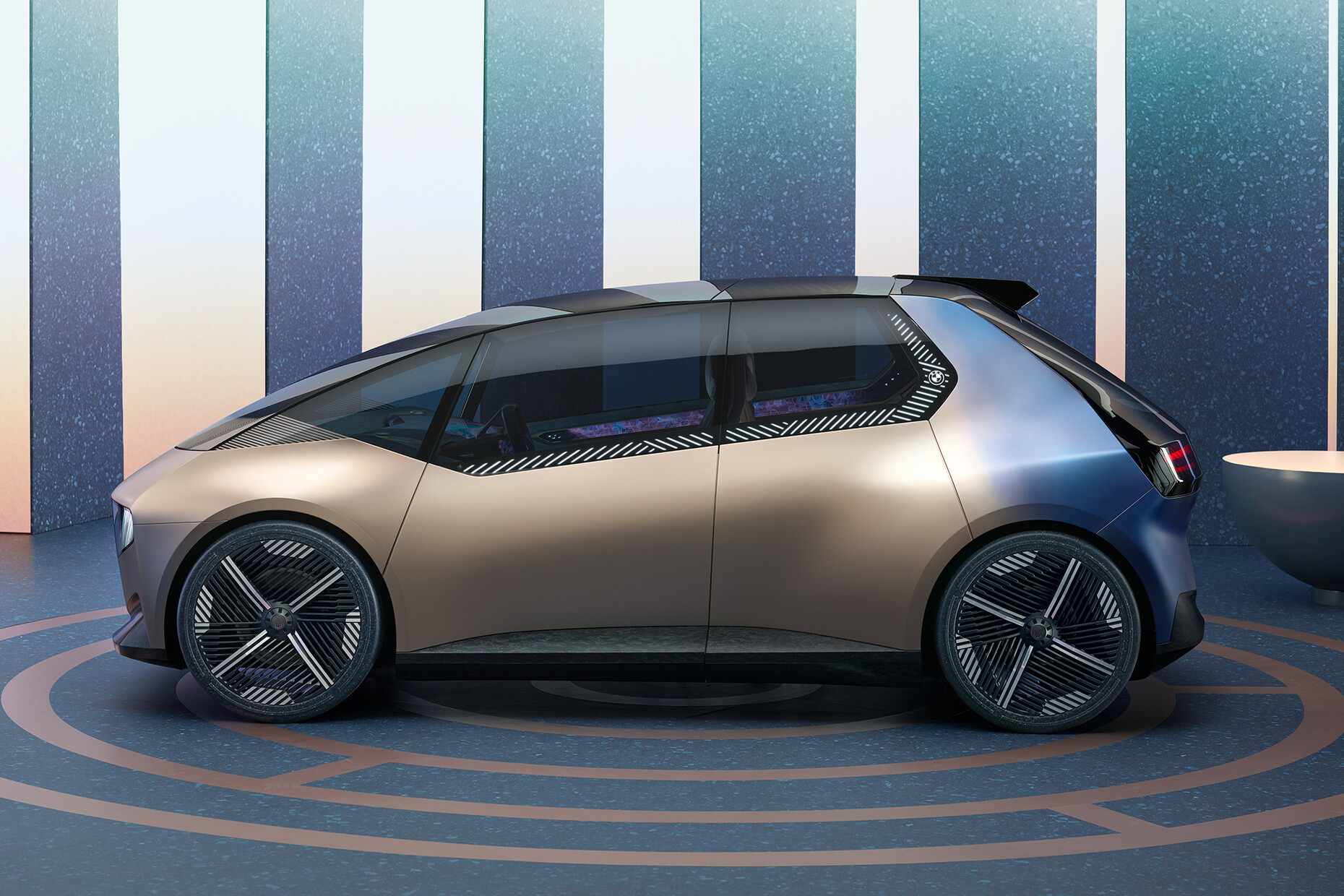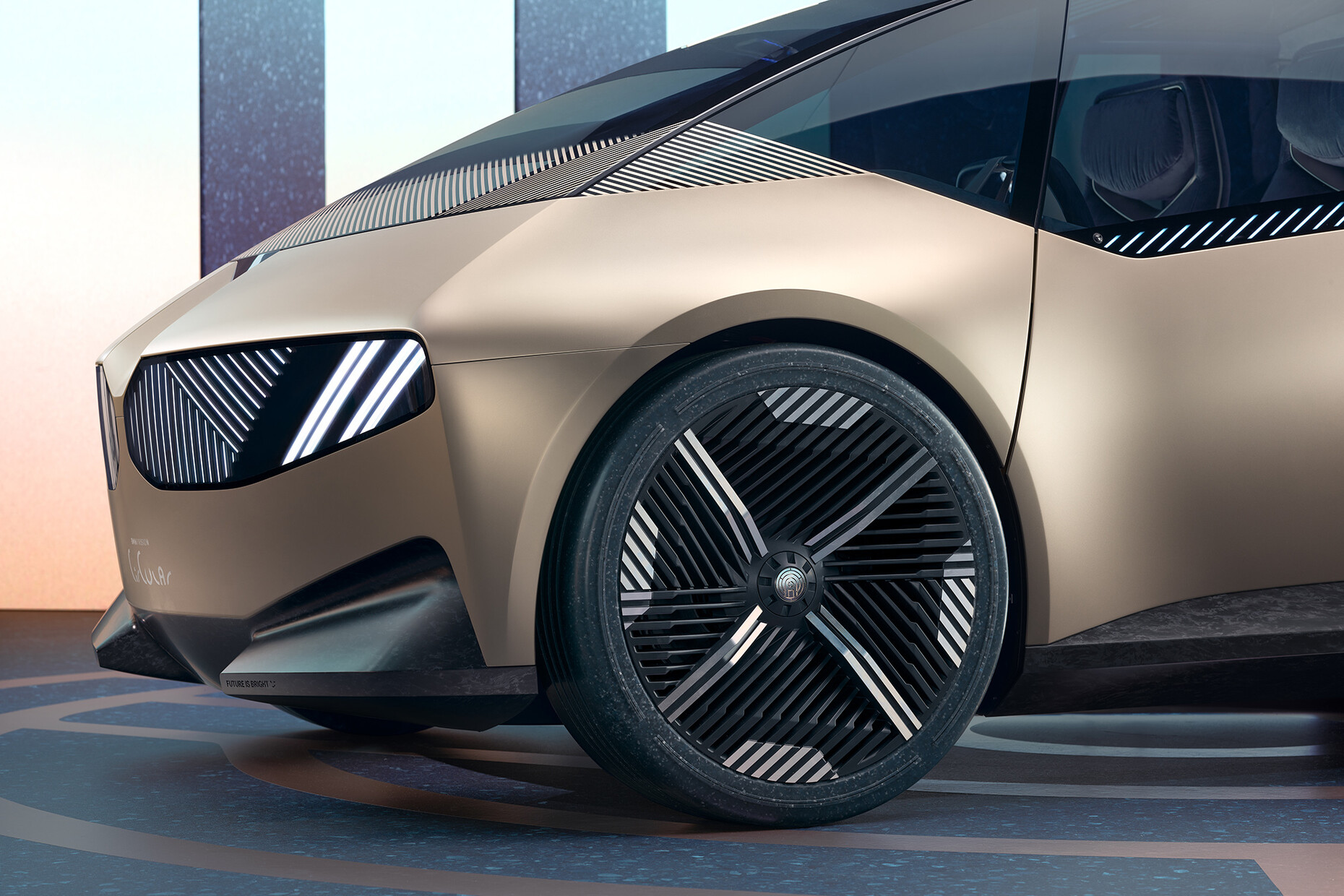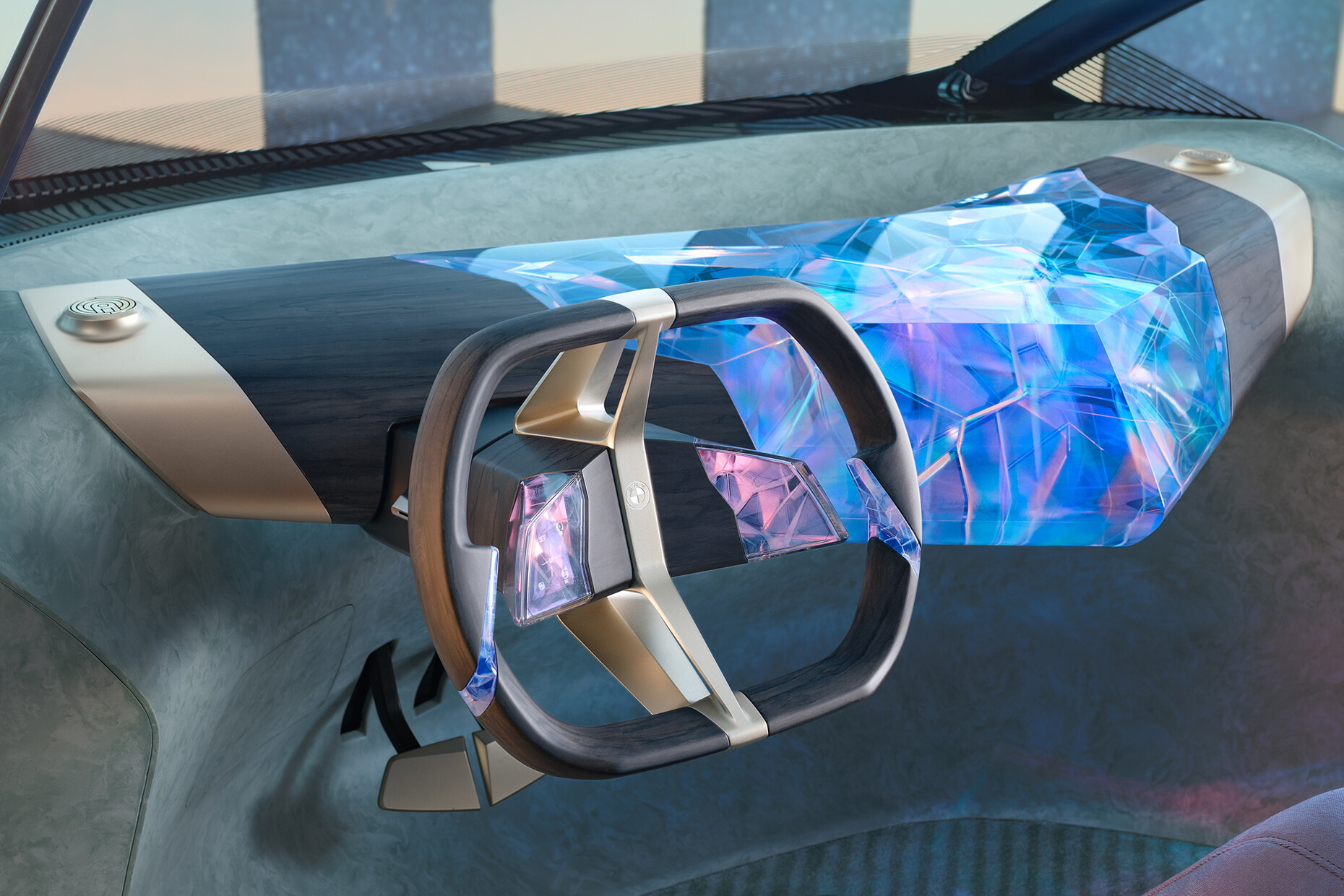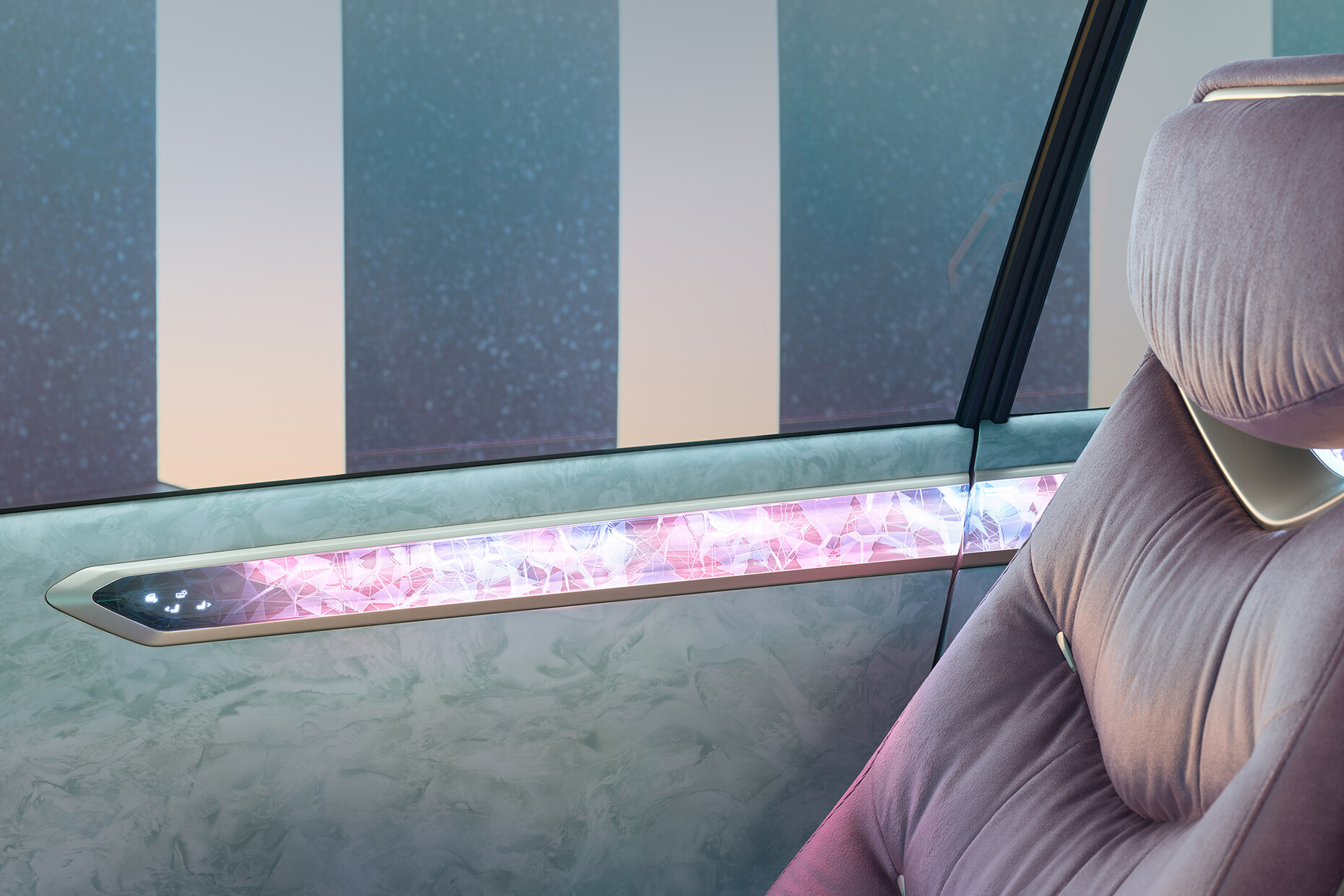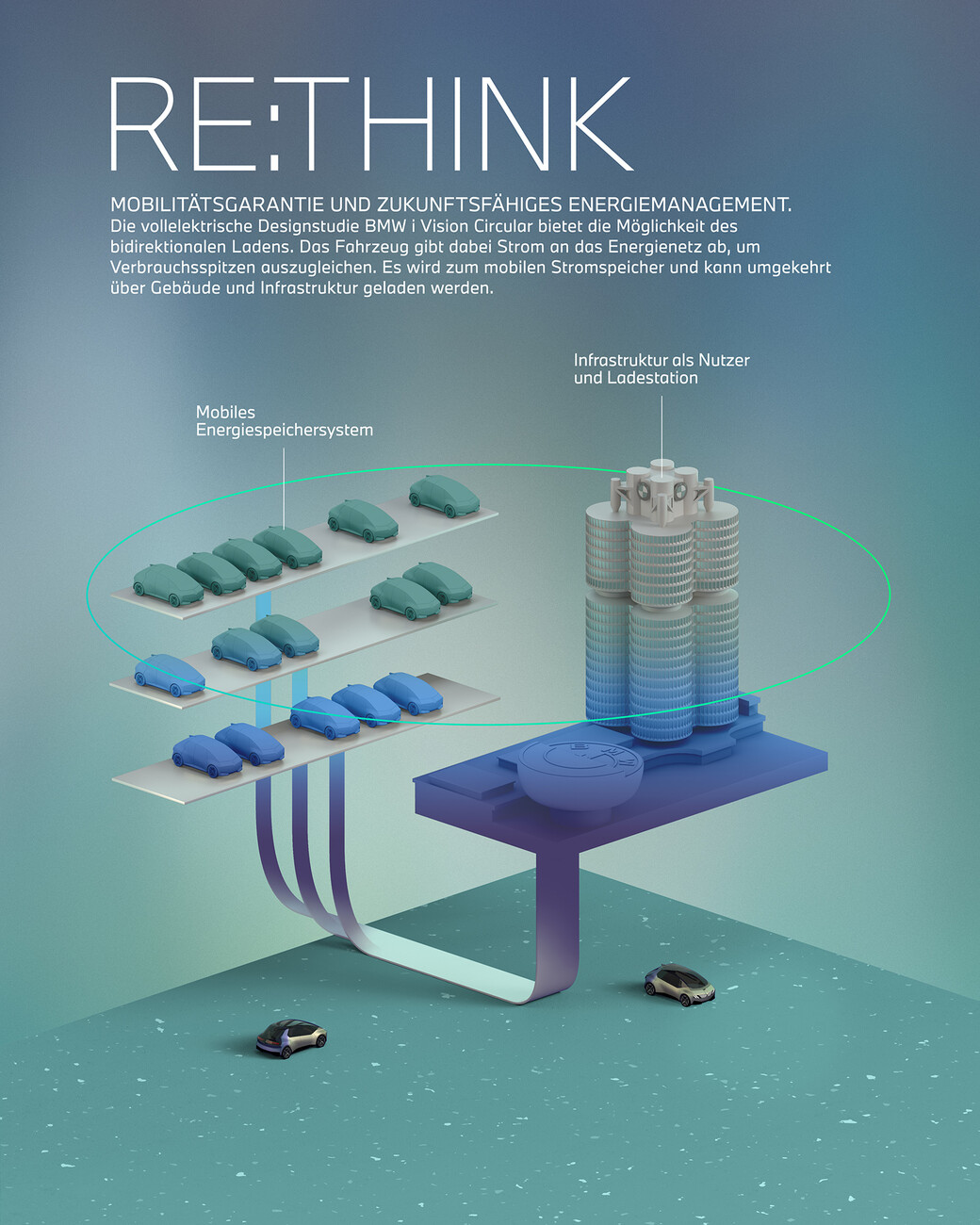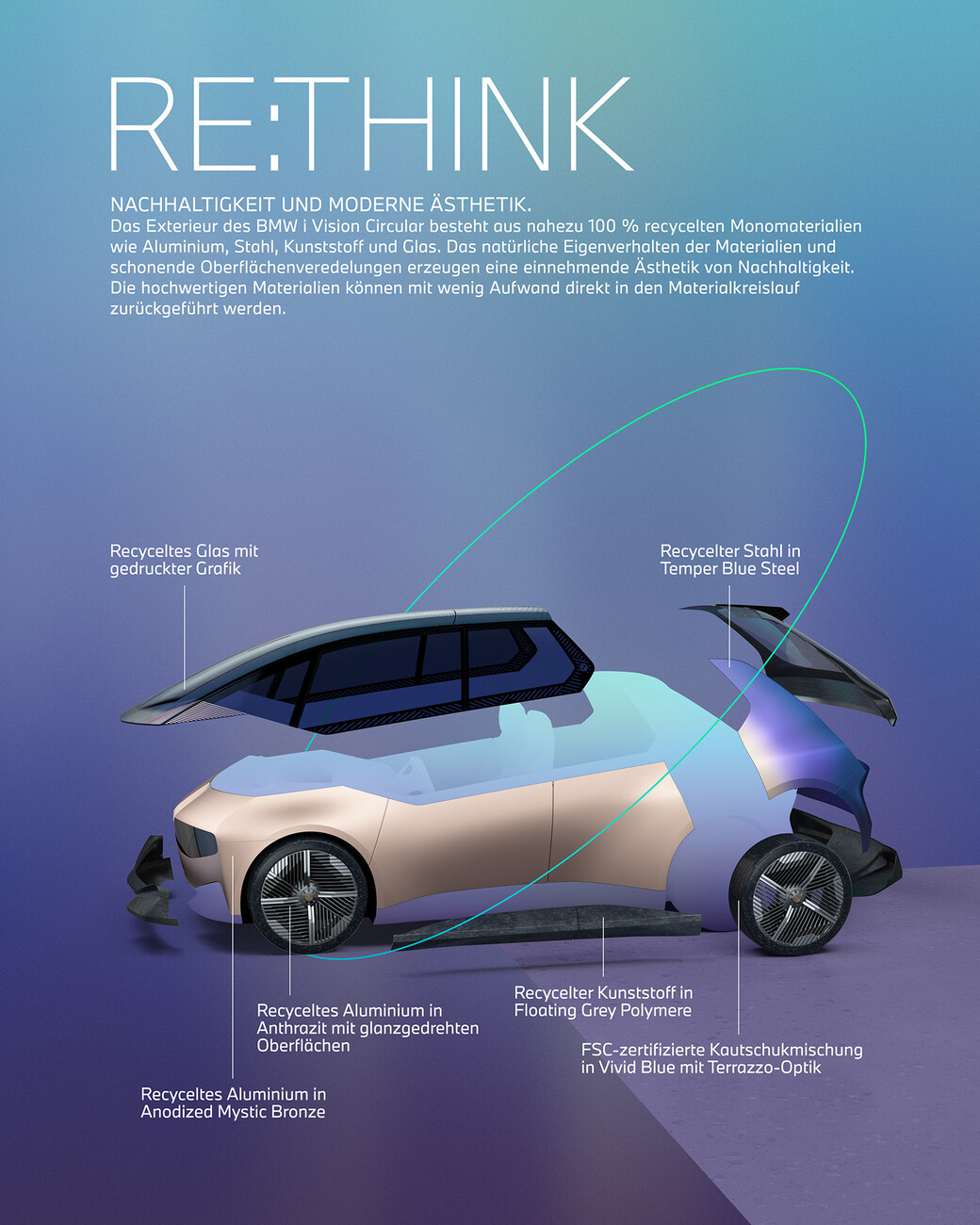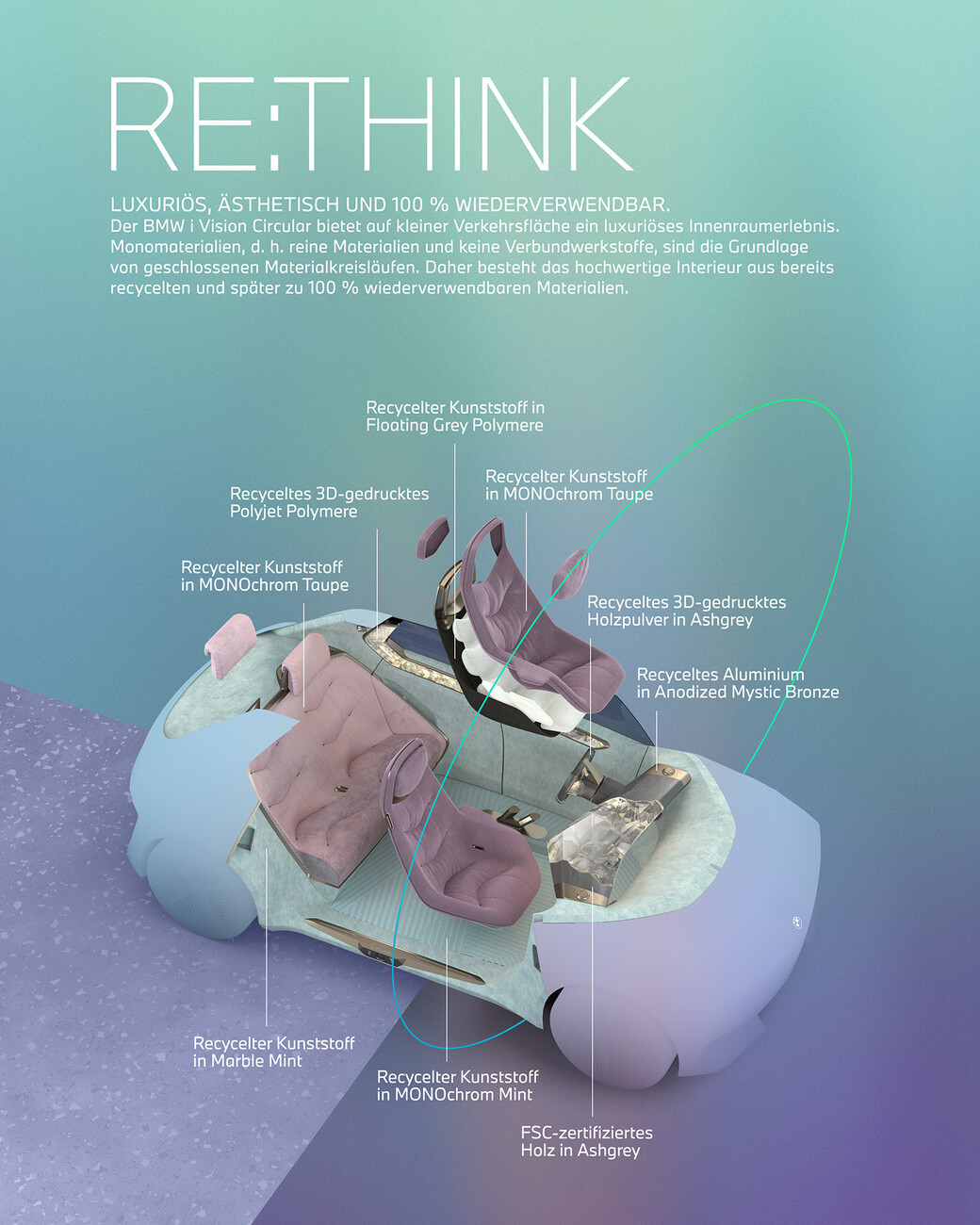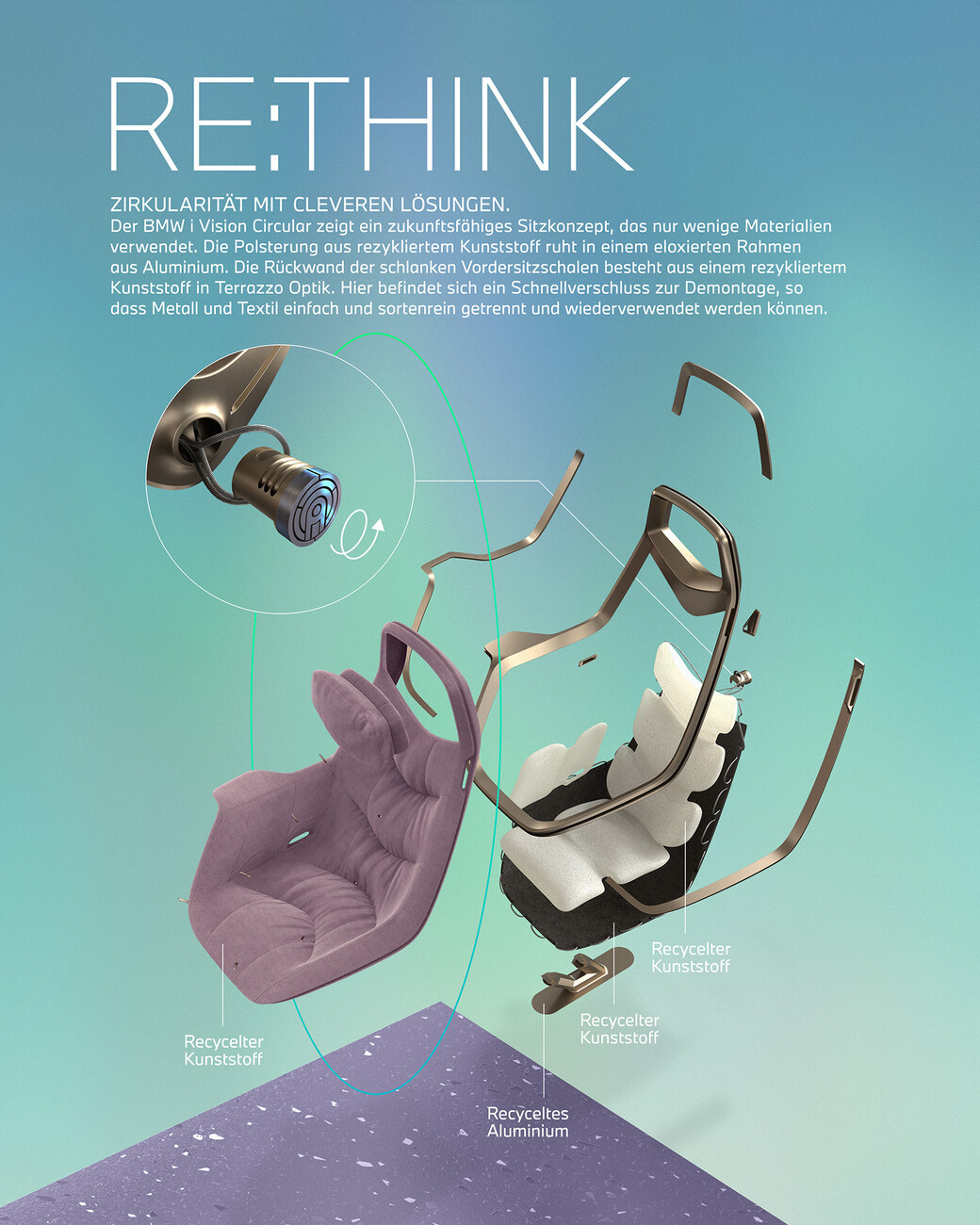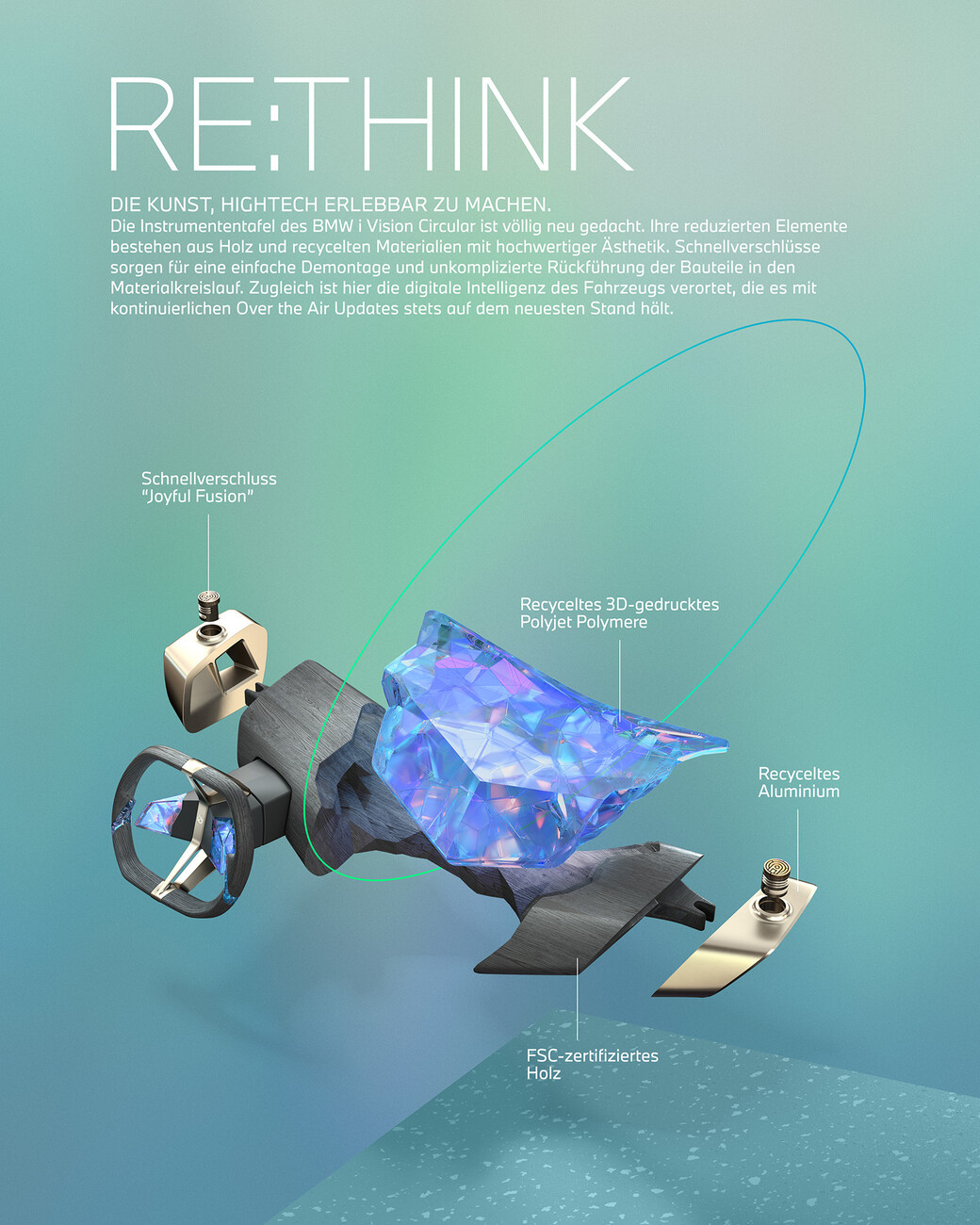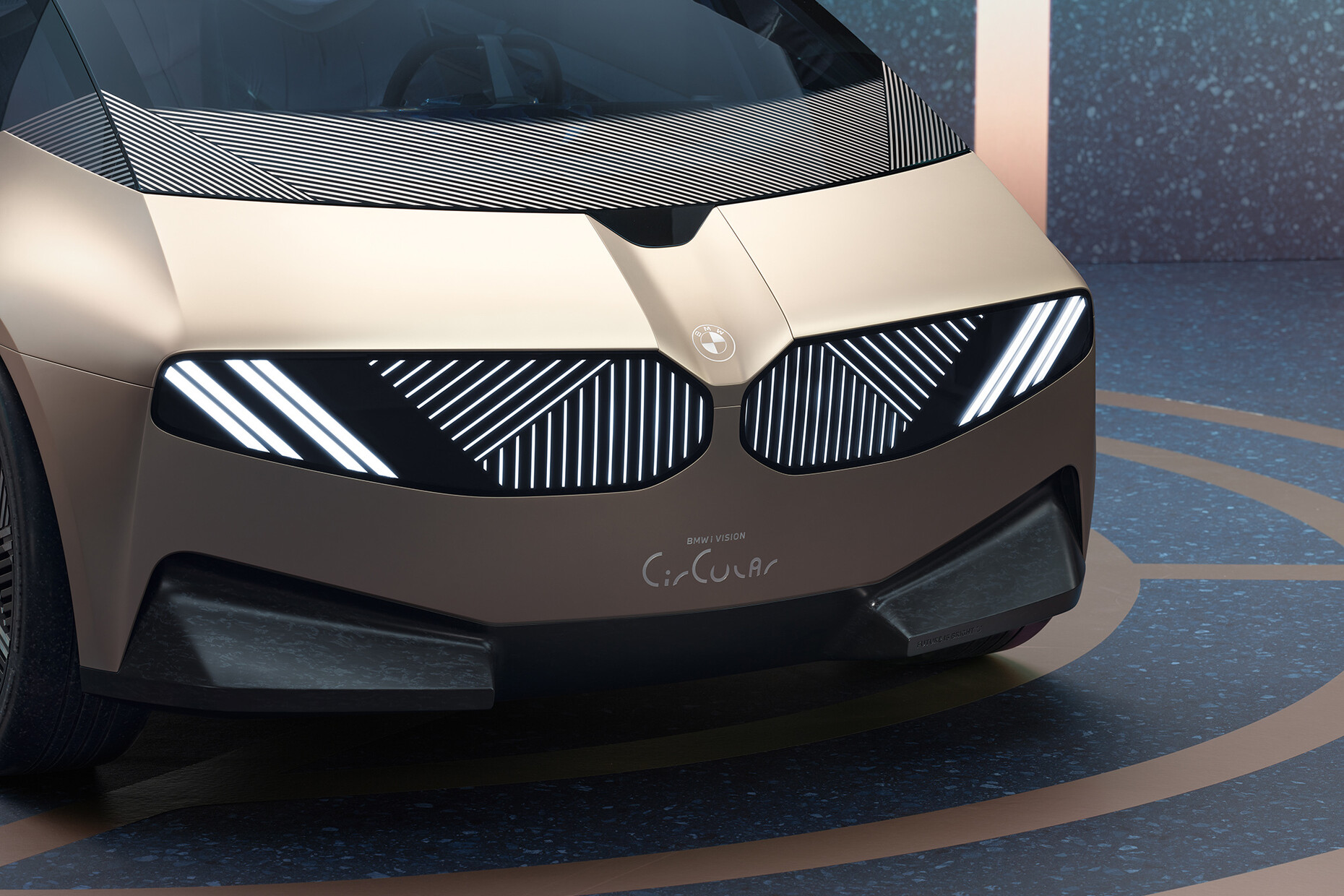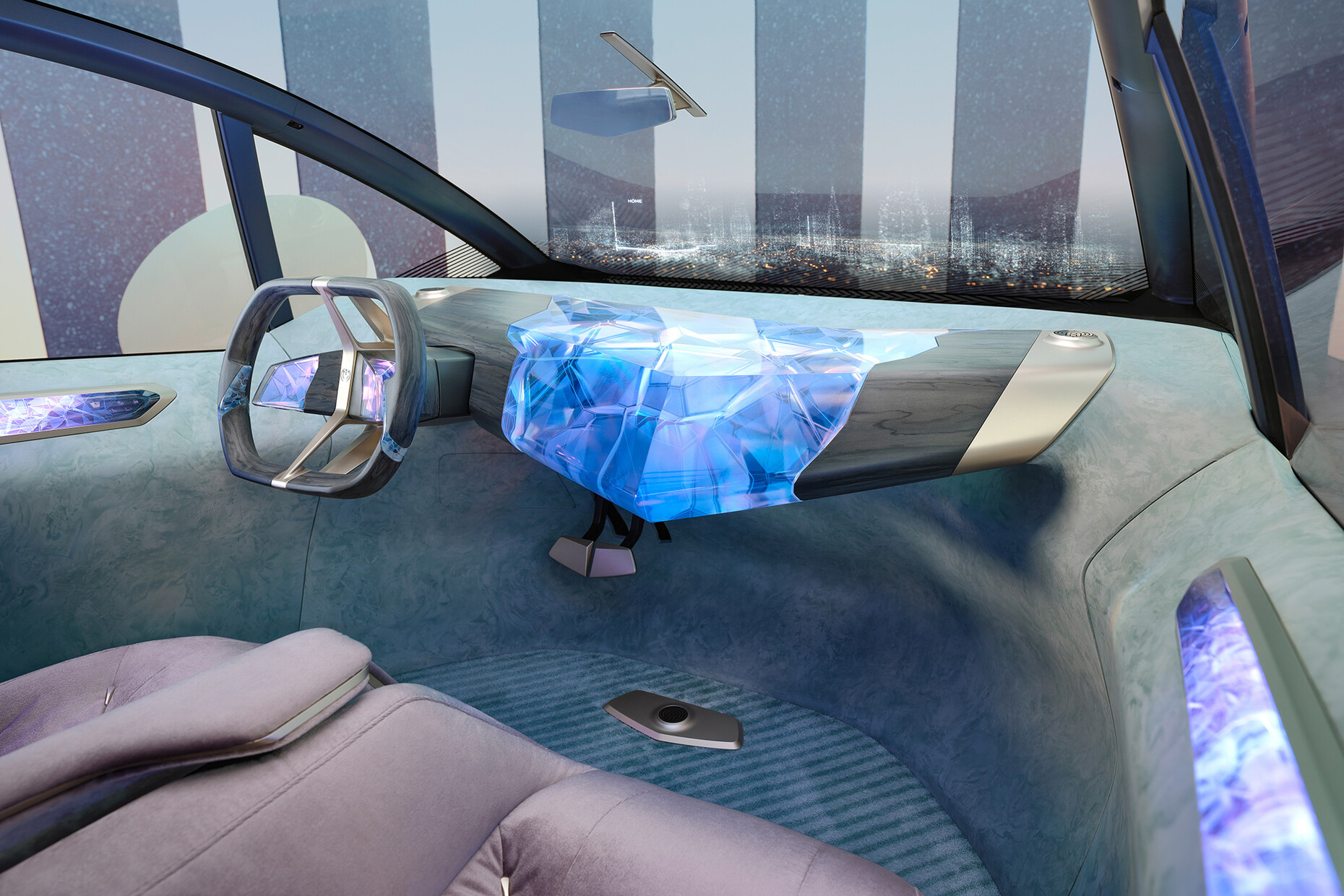MOBILITY
The sum of all parts
Sustainability is the buzzword of the current age. That is hardly surprising given that the climate crisis has been making itself felt for some time and is forcing industry to reconsider and recalibrate. This also holds true for carmaker BMW which is presenting its "BMW i Vision Circular" at this year’s IAA International Automobile Show. It’s a roughly four meter long, fully electric, four-seater car. The idea is to look ahead to 2040 and to explore options for a sustainable and simultaneously luxurious BMW. The "BMW i Vision Circular" is one of five concept cars with which the company wants to reimagine the topic of urban mobility taking into account electromobility, digitization, and sustainability.
This is why the Bavarian automobile virtuoso has designed the "BMW i Vision Circular" according to the principles of the circular economy. Alongside bio-based, certified raw materials other materials are used that have already run through a product lifecycle. The same goes for the energy employed which is why the solid-state battery is 100 percent recyclable and is manufactured almost entirely from recycled materials. Here the four guiding principles are "Re:Think", "Re:Use", "Re:Cycle" and "Re:Duce". The latter refers among other things to the reduction of components, material groups, and surface finishes – forgoing exterior varnishes, leather and chrome. Instead, there are tires made of natural rubber with a terrazzo-effect, a 3D-printed steering wheel rim of bio-based materials, and a fender area with a marbled surface of recycled plastic. In place of a varnish the "BMW i Vision Circular" boasts a gold-bronze colored anodized surface of secondary aluminum. The most radical stylistic changes are the engraved brand emblem and the reinterpretation of the characteristic BMW kidney grille as well as the headlights at the front that now emit digital light.
In other words the "Re:Duce" aspect of the "BMW i Vision Circular" also refers to its minimalist-futuristic design; in fact, the monolithic shape really does make you think of the year 2040 and beyond. This also involves minimizing the volume yet despite its smaller footprint the car still has a roomy feeling to it. It’s an impression created in part by the two front seats resting on a slender base that are somewhat evocative of executive office chairs. Moreover, the restrained rearview mirror produces a spacious feeling. The seat upholstery is made of recycled plastic and is embedded in a pale gold aluminum frame. Unfortunately, pastel shades with a mixture of mint green and taupe with gray and violet as well as golden bronze are favored for the color concept, something somewhat at odds with the sculptural, futuristic exterior.
As regards digitization, the car points decidedly to the future: In place of the classic instrument panel there is a 3D-printed, crystal body that responds to the movement of the hands and is set in an element of naturally treated wood. The lower section of the windscreen serves as a platform for the information surface obviating the need for further displays inside. This reduces the hardware that would otherwise be necessary and creating new scope for design options. Finally, by using mono-materials and forgoing the use of adhesives or compound materials it is possible to completely dismantle the "BMW i Vision Circular" down to its individual parts. To this end, so-called "joyful fusion" provides quick-release fasteners on rims, seats and the instrument panel. This really does make it the most radical glimpse into the future: a car that truly is the sum of all its parts.
